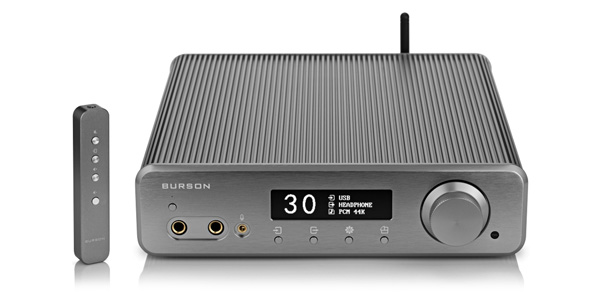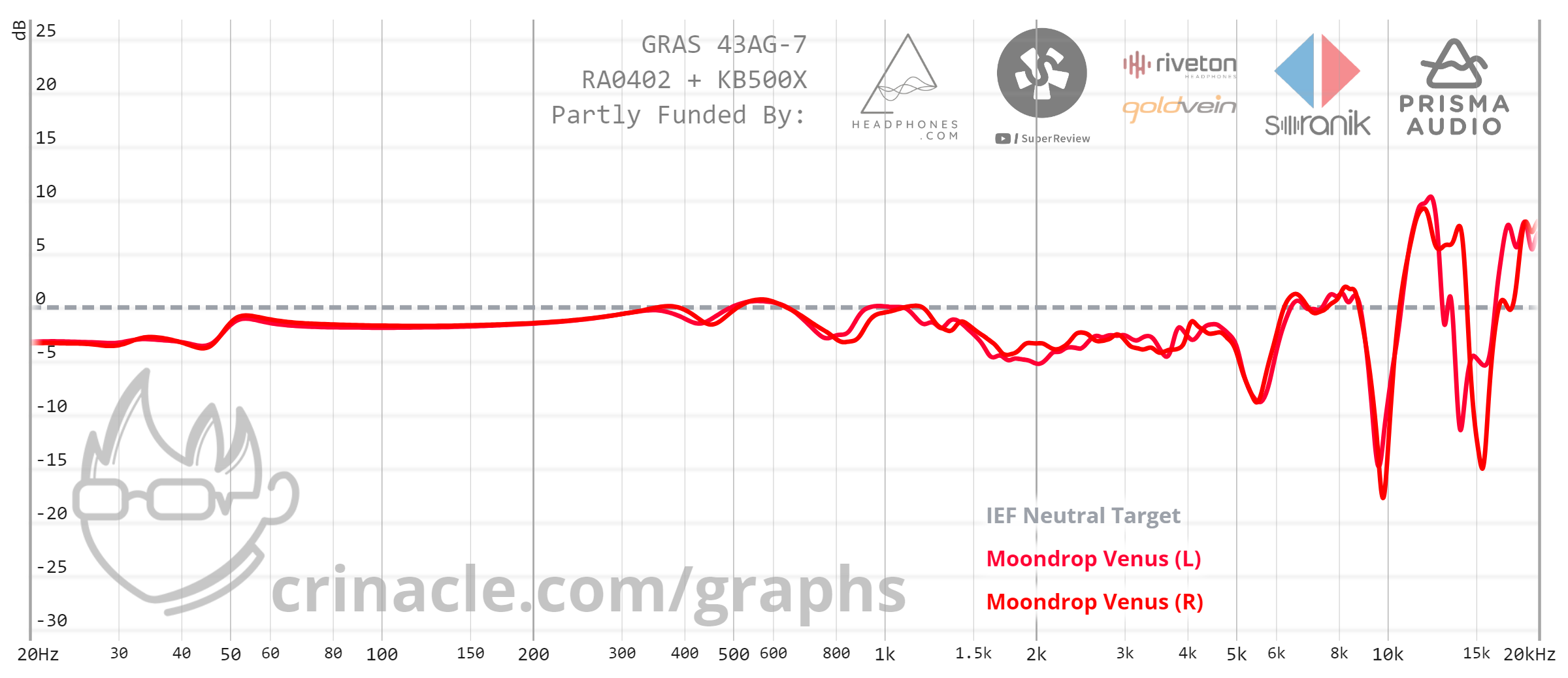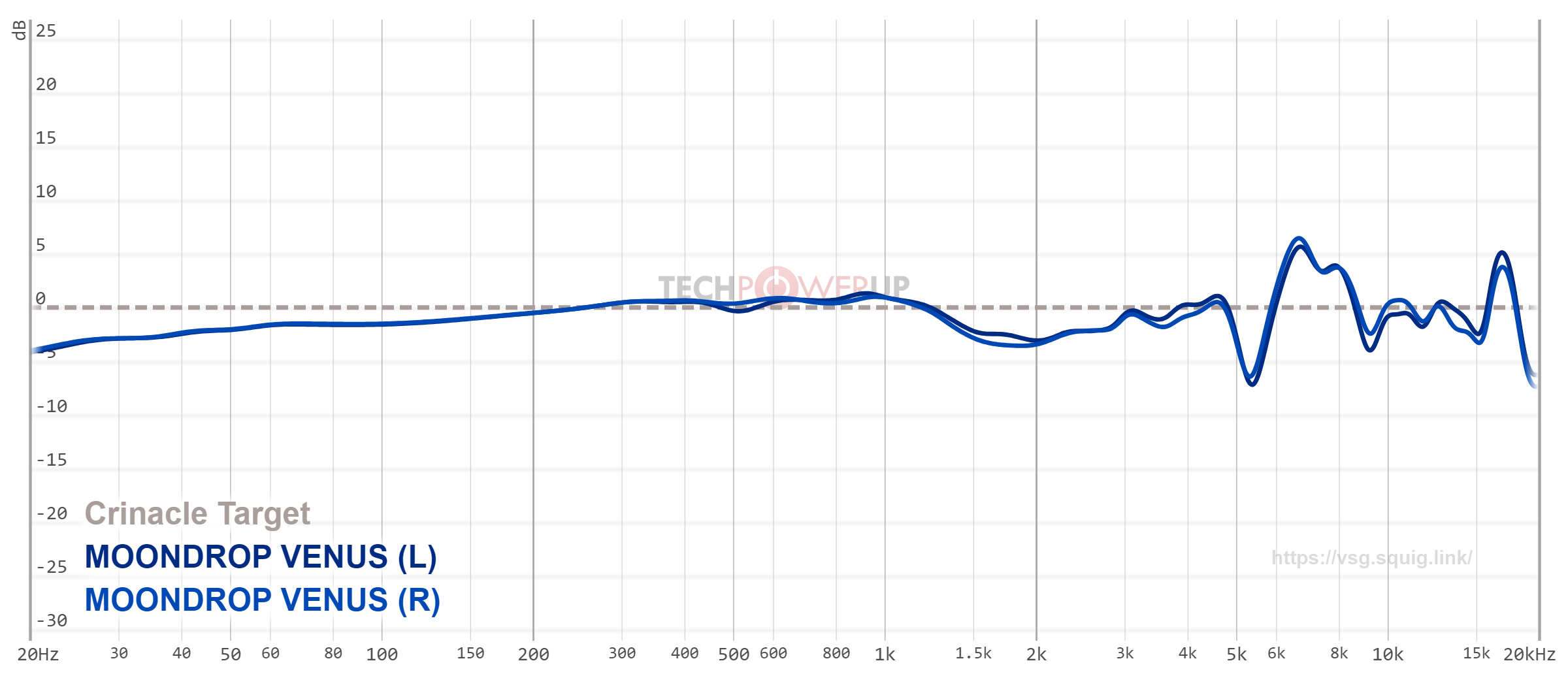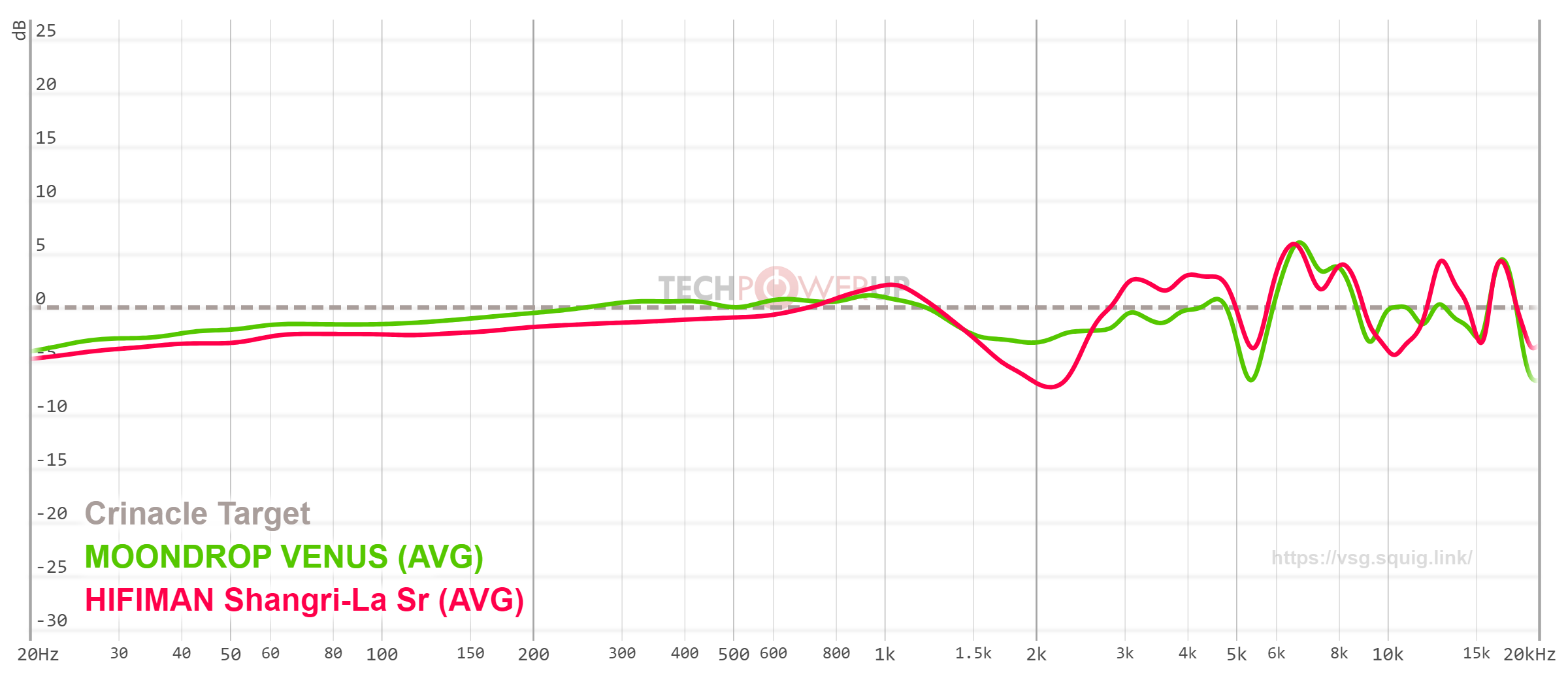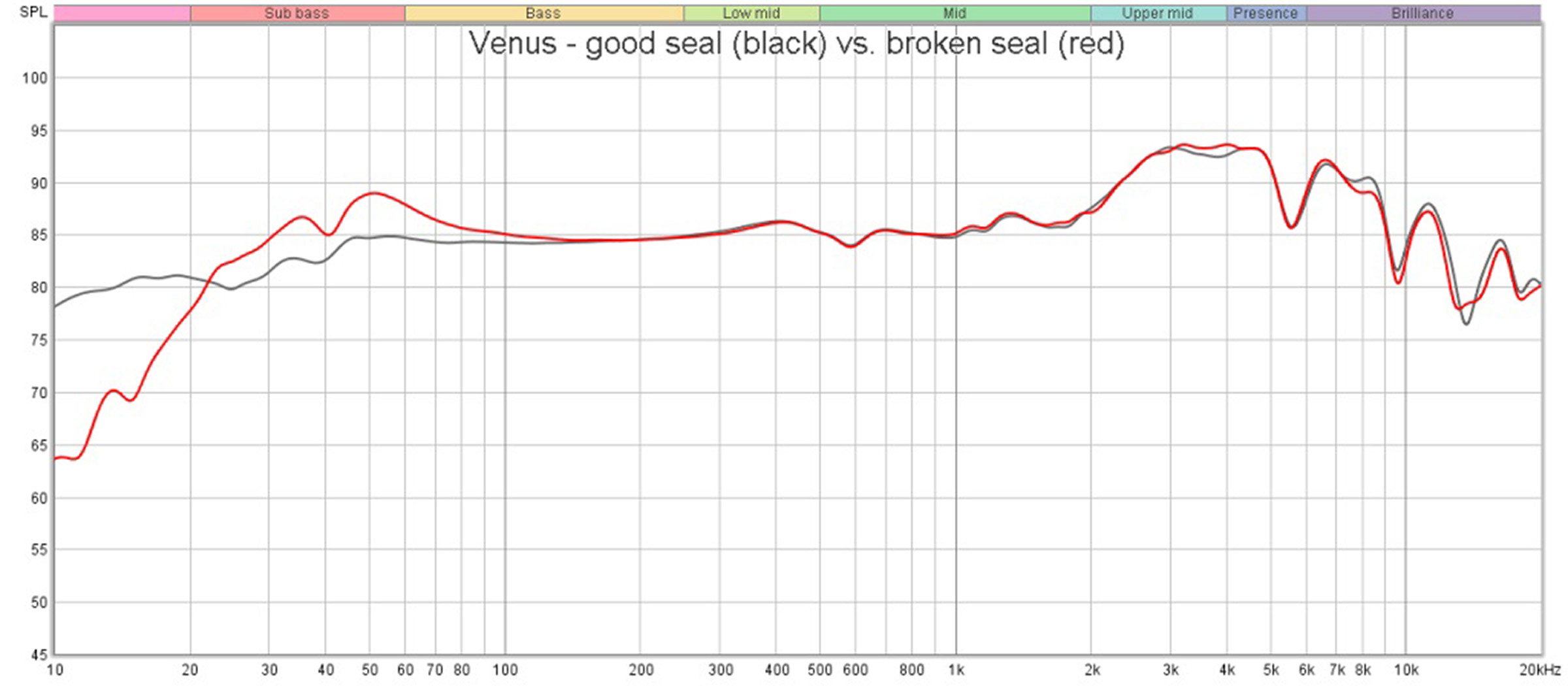Hello everyone.
I don't know if René K
(*) still listens to his Moondrop VENUS planar headphones, if he's put them away in a cupboard, or if he's sold them for half the price; but as far as I'm concerned, I'm keeping the VENUS planar headphones.
(*) https://www.audiophonics.fr/en/audi...ne-o100mm-100db-18-ohm-6hz-80khz-p-17088.html
If I ever sell it second-hand, I'll sell it (the VENUS) for half the price of a JPS Abyss 1266 Phi TC headphone, full version at 9,955 Euros TTC (in France), with the Superconductor cable supposed to improve/correct the tonality of the basic Abyss (giving it, according to the advert,
"a better 'embodiment' of voices, a better-cut and cleaner bass, and a unique refinement + smoothness in the upper midrange / treble registers").
And yet, I'll lose out in the "bargain"; in the end, I'd rather keep it, for want of anything better.
Why compare the
Moondrop VENUS (a 600-euro planar headphone) with the
JPS Abyss 1266 Phi TC "full version" planar headphone,
with its Superconductor cable, weighing down the price of the Abyss headphone to almost 10,000 euros (9,995 euros), i.e. 16.6 times the price of the VENUS!
So, is this comparison of these two planar headphones as silly as you might think, or does it have some relevance?
Well, you're about to find out.
First, the facts (and physical and electro-acoustic parameters).
First, the prices of the "full" versions of the two headphones (Abyss 1266 Phi TC + Superconductor cable vs. Moondrop VENUS) (9,995 Euros vs. 599 Euros incl. VAT).
Then the weights of the two headphones (without cables): 640 g (Abyss 1266 Phi)
https://eu.abyss-headphones.com/pages/abyss-ab-1266-phi-reference-headphone
versus 564 g (
my copy of the VENUS, with its improved suspension band, wedged to my large head, with reinforced attachment (doubled by a nylon strap), for the suspension band attachment point).
The effective sensitivity (and efficiency) of the two planar headphones, as measured by the RAA website, not at a single frequency (even if the reference frequency is the "standard" 1 KHz), but over a wide frequency range (from 100 Hz to 10 KHz), which is much more representative of the overall acoustic power delivered by the headphones to our ears (which, fortunately, listen to more than just 1 KHz):
Abyss 1266 Phi TC: effective sensitivity (100 Hz-10 KHz): 95.8 dB/V rms SPL; 83.1 dB/mW SPL; average impedance 53.9 Ohm.
(Source:
https://reference-audio-analyzer.pro/en/report/hp/abyss-ab1266-phi-tc.php#gsc.tab=0)
Moondrop VENUS: effective sensitivity (100 Hz-10 KHz): 106.2 dB/V rms SPL; 88.7 dB/mW SPL; average impedance 17.7 Ohm.
(Source:
https://reference-audio-analyzer.pro/en/report/hp/moondrop-venus.php#gsc.tab=0)
You'll notice that, in practice, the VENUS is far more sensitive than the Abyss 1266 Phi TC, both in terms of sensitivity expressed in dB/V rms (Nb: 10 dB better for the VENUS vs. the Abyss: you'll need to push the volume control knob much less far than with the Abyss, to obtain the same SPL level), and in terms of efficiency (in dB/mW SPL), nearly 6 dB better for the VENUS vs. the Abyss.
In practice, the VENUS will require almost 4 times less power than the Abyss, and will be able to make do with an amplifier 4 times less powerful than the Abyss, on the respective load of each headphone (54 Ohm and 18 Ohm).
The size of the planar drivers: 66 mm in diameter for the Abyss driver (as indicated by the name Abyss 1266) versus 100 mm in diameter for the Moondrop VENUS driver, more than doubling (x 2.30) the diaphragm area of the VENUS versus Abyss 1266, which is no mean feat, especially for good bass reproduction, and you'll soon see why.
The thickness of the Moondrop VENUS's planar diaphragm is known (2 um), as is the thickness of the VENUS's pure silver conductive traces (1 um), which cover almost 80% of the VENUS's driver surface and account for 75% of the mass of the moving assembly (mass of the metallic traces + mass of the diaphragm).
The thickness of the planar membrane of the JPS Abyss Phi TC is unknown, as are the thickness and nature of the metal traces covering the diaphragm.
The resolution of the JPS Abyss 1266 Phi TC planar headphone is regarded as one of the very best (for a planar technology headphone); Abyss 1266 headphone sometimes described, by JPS advertising, as one of the best headphones in the world (the best?).
And just as well, the resolution of the Moondrop VENUS planar headphones is also considered top-notch, as one of the very best by our friend René K. (for a planar technology headphone).
René K. doesn't hesitate to compare the resolution of the VENUS to that of excellent electrostatic headphones (such as the Stax SR-007 and 009, whose diaphragm thickness is of the same order as that of the VENUS (around 2 um)).
Let's start by comparing the FR of these two planar headphones (Abyss 1266 vs. VENUS), on the same measurement platform, to begin with RAA,
with the pads of both headphones completely sealed, which is important for the reproduction of the SPL level of the bass at the lowest frequencies.
The FR (and sensitivity) curve, in addition to being higher (in sensitivity level), is also more regular, less uneven for the Moondrop VENUS, than that of the Abyss 1266 Phi TC, pads sealed.
What brings the VENUS and the Abyss 1266 Phi TC so close together is not their respective FRs, with sealed pads, but the bass response of these two planar headphones (66 mm and 100 mm in diameter respectively for the size of the drivers),
with pads slightly unsealed (seal deliberately broken).
This is an
intrinsic characteristic and quality shared by these two planar headphones (Abyss 1266 and VENUS), and is one of their strengths (compared to many other planar, electrodynamic or electrostatic technology headphones).
This particular feature (voluntary unsealing of the pads), exploited to the full by the JPS Abyss 1266, but which can also be used with the Moondrop VENUS, with a pad layout that you'll soon see in the photo (and in the RF curve, below) gives the following advantages:
- Increase in bass SPL (around 50 Hz) by around +4 dB, thereby boosting bass levels compared with sealed pads, and this without any noticeable change in midrange and treble FR, which is essential to avoid altering the timbres of these two planar headphones by unsealing the pads.
- Increased bass dynamics, as if "liberated" (unbridled), with a more impactful (percussive) bass character.
- A wider soundstage, with no change in tonality (timbre) in the midrange and treble, which is important to note. The sound is not in the head, but further forward and to the sides.
How do these two headphones, Abyss 1266 Phi TC and Moondrop VENUS, fit on your head, and how can you ensure (voluntary) breaking of the seal on the pads of these two headphones?
Nothing is better than these two photos (below).
To unseal the pads on the Abyss 1266, rotate them slightly back and forth to create a slight opening (slit) in the front of the pads. To do this, use the rotation axis (pivot) located on the top of the headset's rigid hoop to create the desired opening (and the breaking of the pads' seal on their front, to a greater or lesser extent).
And for the Moondrop VENUS: first of all, sorry I couldn't find as nice a model as I did for the Abyss!

You can see (or rather guess) the rather subtle, but real adjustment I made to my VENUS headphone.
Not the particularity of the headband adapted (modified) to my big head: improved suspension headband, wedged to my big head for the headband elastic (locked to my head position), with also a reinforced fastening (doubled by a nylon strap) for the (potentially fragile) attachment point of the suspension headband on the headphone frame.
Instead, look at the yellow arrows and the position of the pad sewing line (rotational), as well as the axes of the anterior-posterior pivot of two pads. The pads are slightly open at the front, leaving a 3 or 4 mm gap at the front of the pads (breaking the seal) at the level of the two spectacle temples.
This deliberate breaking of the seal on the front of the VENUS pads is essential to achieve the "Abyss like" effect desired with the VENUS, with the pads unsealed.
So, what does this deliberate (and intended) breaking of the seal on the pads of the Abyss 1266 and Moondrop VENUS, as shown in the photo above, actually achieve in practice?
The FR curves of these two headphones (Abyss 1266 Phi TC and Moondrop VENUSà, pads slightly unsealed, speak for themselves.
And what do we see for these curves?
As already mentioned, an increase in bass level at 50 Hz, for both headphones (Abyss and VENUS), of around +4 dB SPL, for slightly unsealed (versus sealed) pads, which will also translate into an increase in bass dynamics with greater impact force.
You'll notice (as already mentioned) that there's no change in the midrange and treble FR of either headphone, unsealed versus sealed pads, which is fundamental to the respect of the timbres of both headphones.
But the VENUS stands out from the Abyss 1266 Phi TC, probably because of its 2. 3 times larger diaphragm area, with better respect for bass depth and slightly unsealed pads: 30 Hz and 20 Hz with the VENUS are reproduced at 0 dB relative and -7 dB relative respectively (while 50 Hz is reproduced at +4 dB relative); with the Abyss 1266 Phi TC, 30 Hz is at -2 dB relative and 20 Hz at -10 dB relative, while 50 Hz is, like the VENUS, at +4 dB relative.
Here, the VENUS has a slight advantage in terms of bass depth, which is even more "abyssal" than that of the Abyss, with pads slightly unsealed!
In short, I'm still looking for reasons to prefer the JPS Abyss 1266 Phi TC planar headphone over the Moondrop VENUS: what does it really offer that the Moondrop Venus doesn't? Apart from that, let me recap:
- A price 16.6 x higher than the VENUS (taking the "full" versions of both headphones, with the Abyss 1266 including the Superconductor cable supposed to improve the Abyss' timbre and precision) (price incl. VAT of 9,950 euros vs. 599 euros).
- 80 g heavier (excluding cable) for Abyss 1266 vs. VENUS (640 g vs. 560 g).
- 2.3 x smaller driver diaphragm surface area on the Abyss vs. VENUS, which is important for bass depth, slightly less abyssal on the Abyss 1266 vs. VENUS, pads slightly unsealed.
- Effective sensitivity (measured between 100 Hz and 10 KHz), 10 dB SPL lower (in dB / V rms) and 6 dB SPL lower (in dB / mW) for the Abyss 1266 Phi TC vs. VENUS, which means, at the very least, that the VENUS (quite demanding in terms of current for amplification) will require amplification four times less powerful than the Abyss, on the respective load of each headphone (54 Ohm and 18 Ohm respectively).
- a less accurate timbre respect for the Abyss 1266 Phi TC versus the Moondrop VENUS, more just, true and natural for tone (voice and musical instruments).
The Abyss "full version" Superconductor cable, which is supposed to improve the timbre of the Abyss 1266, will not be enough on its own to compensate for the rather large difference between the midrange and treble FRs of the Abyss 1266 and the VENUS (nb: the FR differences are far too large to compensate for, despite all JPS's expertise in audio cable production).
What do these two headphones (JPS Abyss 1266 Phi TC and Moondrop VENUS) have in common?
High-quality construction (all CNC-machined metal and leather), with the result that both headphones are quite heavy.
An originality of design and operation (unsealing of pads) that's well worth the detour.
That's about it.
Thanks for reading.
PS: the audio CD that made me discover the real dynamics of the VENUS planar headphones on the Viva 2A3 amp (with the pads slightly unsealed, as exactly shown in the photo of my VENUS (on my head) above).
Dynamics of this MERCURY LIVING PRESENCE recording of Igor Stravinsky's Rite of Spring (the finale), limited to 55 dB real (*) (Actual dynamics measured at this link (below), limited due to analog tape blast of this mythical recording).
Listening level of VENUS headphones with high dynamic range (realy 55 dB).
Note: dynamic range from a minimum SPL of approx. 45 dB (that of the analog tape background noise) to a maximum SPL (peak) of approx. 100 dB SPL (that of the fortissimo percussion of the timpani for the finale) using the VENUS headphones on the VIVA 2A3 amp.
(*) (explanatory source, in french: https://www.homecinema-fr.com/forum/post177805582.html#p177805582)
Original post: https://www.homecinema-fr.com/forum/post181301810.html#p181301810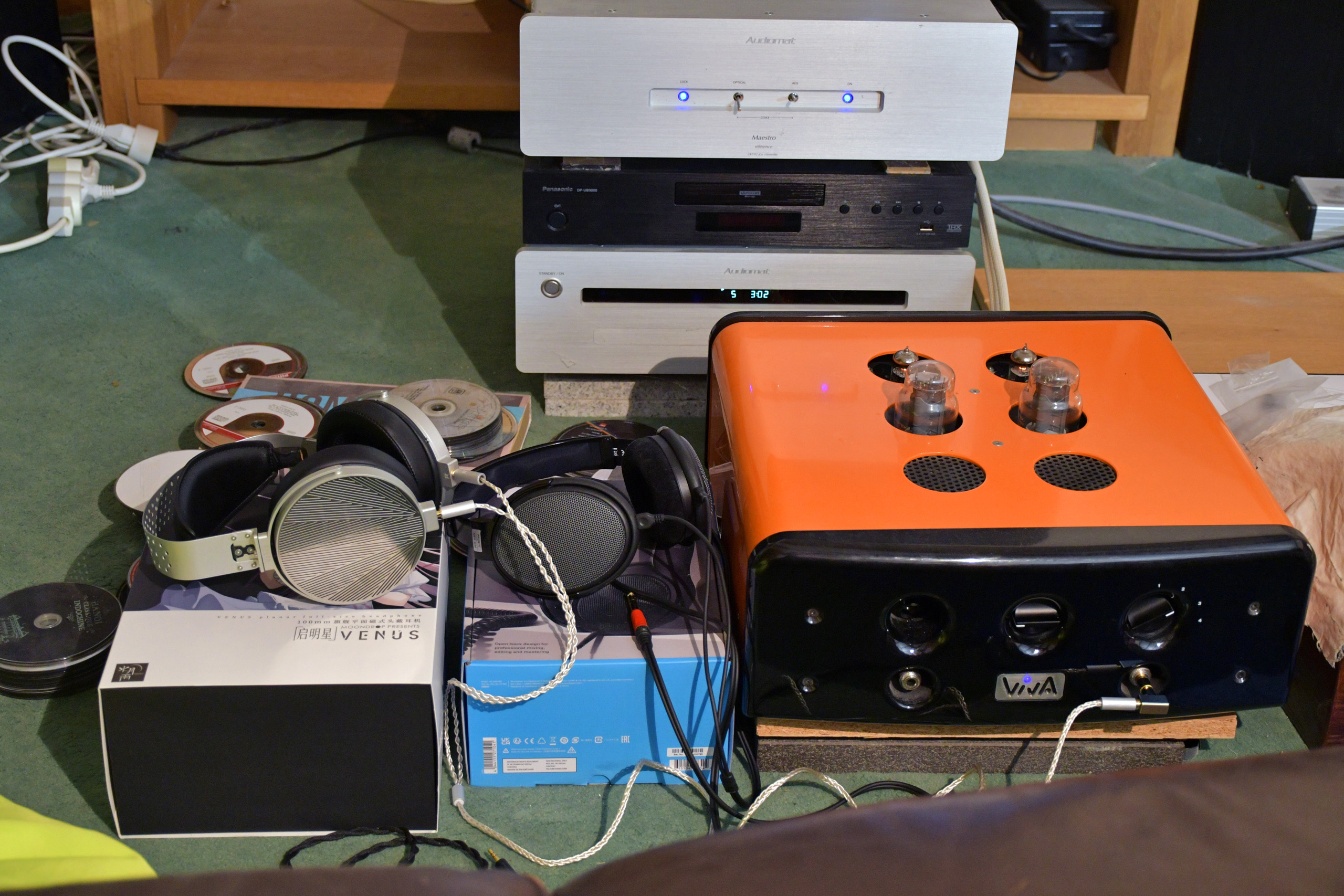



















![NOC]$$D4QZW0G~P`8OAYE5S.png](https://cdn.head-fi.org/a/12334900_thumb.png)




